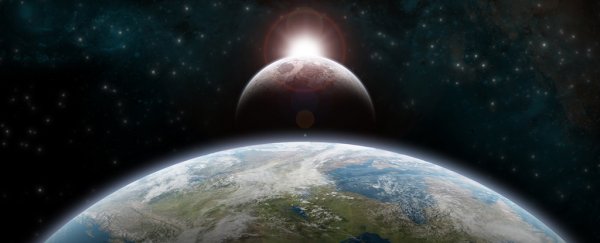The three-body problem, one of the most notoriously complex calculations in physics, may have met its match in artificial intelligence: a new neural network promises to find solutions up to 100 million times faster than existing techniques.
First formulated by Sir Isaac Newton, the three-body problem involves calculating the movement of three gravitationally interacting bodies – such as the Earth, the Moon, and the Sun, for example – given their initial positions and velocities.
It might sound simple at first, but the ensuing chaotic movement has stumped mathematicians and physicists for hundreds of years, to the extent that all but the most dedicated humans have tried to avoid thinking about it as much as possible.
That's why chronometer time-keepers became more popular for calculating positions at sea rather than using the Moon and the stars – it was just less of a head-scratcher.
Today the three-body problem is an important part of figuring out how black hole binaries might interact with single black holes, and from there how some of the most fundamental objects of the Universe interact with each other.
Enter the neural network produced by researchers from the University of Edinburgh and the University of Cambridge in the UK, the University of Aveiro in Portugal, and Leiden University in the Netherlands.
The team developed a deep artificial neural network (ANN), trained on a database of existing three-body problems, plus a selection of solutions that have already been painstakingly worked out. The ANN was shown to have a lot of promise for reaching accurate answers much more quickly than we can today.
"A trained ANN can replace existing numerical solvers, enabling fast and scalable simulations of many-body systems to shed light on outstanding phenomena such as the formation of black-hole binary systems or the origin of the core collapse in dense star clusters," write the researchers in their paper.
The researchers simplified the process to only include three equal-mass particles in a plane, all starting with zero velocity, and then ran an existing three-body problem solver called Brutus 10,000 times over (9,900 for training and 100 for validation).
Based on that training, the new ANN was then given 5,000 new scenarios to work on, with the results then compared with Brutus's own predictions. The neural network matched the results that Brutus came up with to an impressive degree.
Various types of neural networks – based on the processing and decision weighing that goes on in the human brain – have previously been used to produce death metal, generate fake faces, and tackle some of the biggest problems in physics.
They give us a way to make computational, but intelligent shortcuts – getting faster routes to answers while still getting the right end result.
In this new study, there are some limitations to talk about: the work has yet to be peer-reviewed by other scientists, and it makes some simplifications and assumptions about three-body scenarios that mean it's more of a proof-of-concept at this stage.
What it does show is that trained neural networks might be able to work alongside Brutus and similar systems, jumping in when three-body calculations become too complex for our current models to cope with.
"Eventually, we envision, that network may be trained on richer chaotic problems, such as the 4 and 5-body problem, reducing the computational burden even more," conclude the researchers in their paper.
The research hasn't yet been published in a peer-reviewed journal, but is available to read on the pre-print server arXiv.org.
